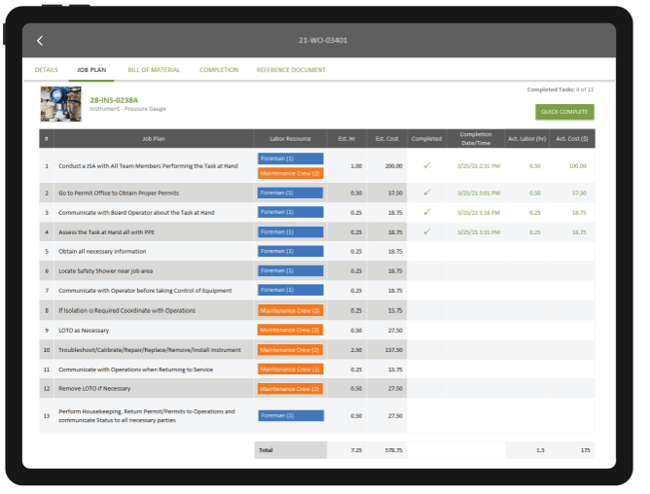Why the Time is Now for Mobile Conduct of Operations
October 5, 2021
Today, many companies have specialized handheld devices for leak detection and repair and warehouse inventory; heads-up displays to access procedures, tablets for operator rounds, and more – yet they continue to shop for disparate mobile applications to solve niche challenges.
Dealing with different user interfaces, bifurcated reporting solutions, and data hierarchies in these patchworked systems is challenging; the resulting redundant sources of data and lack of interoperability make work processes inefficient at best and dangerously disconnected at worst. What companies really need is a single, unified, interoperable interface and data set that takes the complexity out of navigation, presentation, and reporting.
The growing need for an interoperable system matches the growing need to build a resilient, empowered workforce regardless of where the work is occurring – a need that has only accelerated due to COVID-19. Outside of the pandemic, it’s important to note that for Generations Y and Z, working in a connected paradigm is their default – and a basic expectation of the work environment they seek out from an employer. Beyond generational expectations, the more visual, mobile-first approach to work helps the culture embrace technology, while also reinforcing enhanced situational awareness and Operational Discipline.
Mobility can be a catalyst for managing and delivering information to and from the point of work execution, along with supporting operational work processes, addressing changes, and providing information based upon the lifecycle of the asset. Implementing a strategic mobility platform that generates overall operational results requires more than forms on a phone or tablet for data gathering and reporting.
Strategic mobility is a pre-requisite for the Connected Workforce and effective Conduct of Operations (CoO) and that delivers the best competency outcomes.

Mobile applications, deployed across your workforce on multiple devices, enables a Connected Workforce. A Connected Workforce is one that, through the power of mobile and/or wearable devices, is able to send and receive critical information at the point of work. That connectivity is what enables the workforce to do the right things, every time, and for management to know that the right things are happening at the right time.
Operating companies and service providers are looking for a solution that is user-friendly, cohesive, intuitive, and interoperable to achieve a Connected Workforce. In other words, they’re looking for a single pane of glass that requires almost no training, works on any browser-enabled device, enables remote collaboration, and allows access to critical information in the field. That is what Operational Sustainability delivers with its OESuite® Mobile Applications.
OESuite’s Mobile Applications enables people to reach data-driven decisions faster, with more point-of-work support, and creates a single unified data model that is intuitive and easy to configure. Better decisions made faster is the bottom-line ROI of achieving a Connected Workforce, and our Mobile Applications can get you there.
Is your organization ready to achieve a Connected Workforce? Schedule a consultation.
Topics of Interest
- Asset Strategy / Asset Performance Management (9)
- Compliance Management (4)
- Conduct of Operations (11)
- Cultural Safety (4)
- EHS / Sustainability (2)
- Enterprise Loss Prevention (7)
- Management of Change (8)
- Mechanical Integrity (3)
- Mobile Applications (5)
- Operational Excellence (9)
- Operational Readiness (6)
- Operational Risk Management (14)
- Organizational Performance (6)
- Press Releases (7)
- Process Safety / RMP (22)
- Production / Value (3)
- Workforce Competency / Connected Workforce (11)
